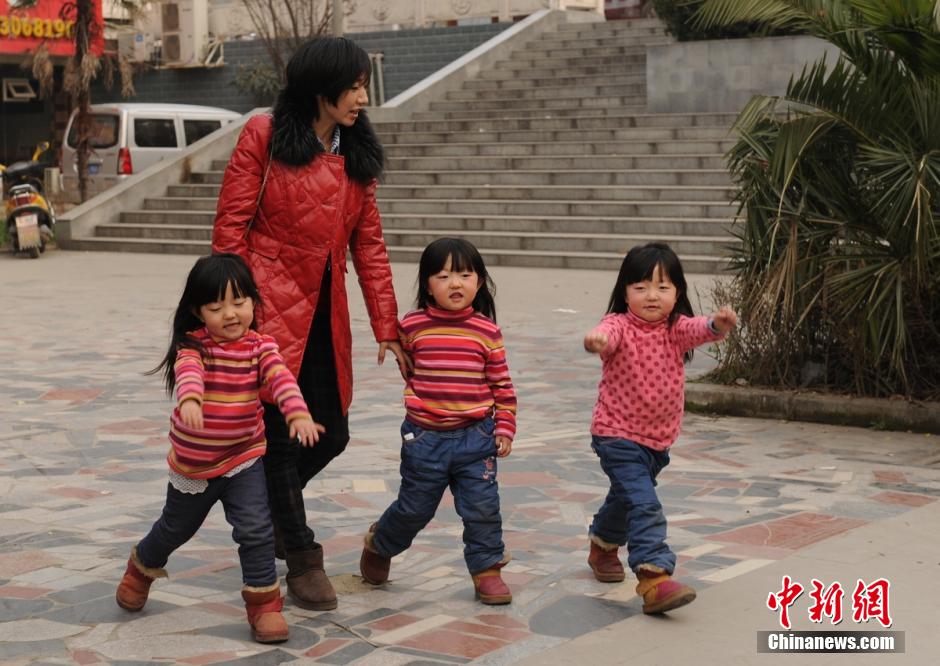 China comes in third at figure skating team event
China comes in third at figure skating team event
 China's teenager skater Yan shines at his Olympic debut
China's teenager skater Yan shines at his Olympic debut
 Taiwan-born actor stars on US TV series
Taiwan-born actor stars on US TV series
 Chinese Lunar New Year gift from abroad
Chinese Lunar New Year gift from abroad Chinese champions of Winter Olympic Games
Chinese champions of Winter Olympic Games  Zhang Yimou fined 7.48 mln for over-production
Zhang Yimou fined 7.48 mln for over-production
 Top 10 timeless female Chinese stars
Top 10 timeless female Chinese stars
 HK police disables WWII bomb in downtown
HK police disables WWII bomb in downtown
 64th Berlin International Film Festival kicks off
64th Berlin International Film Festival kicks off
 |
| Illustration: Liu Rui/GT |
China need not fear slower economic growth. It was inevitable that the day would come when the economy would slow from the blistering 10 percent pace that was recorded during the most miraculous phase of its development, from 1980 to 2010. The big question for China is whether slower growth solves old problems or creates new ones.
By now, there can be little doubting that the unbalanced producer model is about to give way to the more balanced foundation of a consumer society.
It all began in March 2007 with former premier Wen Jiabao's critique of a Chinese economy that he described as increasingly "unbalanced, unstable, uncoordinated and (ultimately) unsustainable."
That sparked intense debate at the upper levels of the Chinese leadership over the structural growth model, an economy that had drawn powerful support from exports and fixed investment.
The 12th Five-Year Plan, enacted in March 2011, sealed the verdict on a consumer-led rebalancing.
A consumer-led economy goes hand-in-hand with the development of China's embryonic services sector. Services were featured prominently in the 12th Five-Year Plan, and recent trends are quite encouraging.
In 2013, services accounted for 46.1 percent of Chinese GDP - over 2 percentage points larger than the manufacturing and construction sectors combined.
It is perfectly natural for consumer and services-led growth to fall well short of the pace of industrial activity that underpins exports and investment. That is true of every major economy in the world today, and it will assuredly be true of China as well.
But this slower pace of underlying growth need not be seen as a threat to China's daunting labor absorption imperatives.
That's because services require more employment per unit of GDP than do the combined activities of manufacturing and construction; over the 2009-12 period, the labor intensity of China's tertiary sector was, in fact, 28 percent greater than that in the secondary sector.
China's three-decade 10 percent growth miracle rested largely on the foundation of an increasingly capital-intensive manufacturing sector. Substituting machines for workers ultimately left China in a tough place.
Growth rates in the 7-8 percent zone were no longer sufficient to absorb surplus labor and maintain social stability.
But the target of 10 percent GDP growth was ultimately a recipe for massive imbalances - namely, excess resource consumption, soaring energy demand, environmental degradation, and horrific pollution. Slower growth, provided it reflects increased activity from labor-intensive services, is the only way out.
Nonetheless, as China moves up the value chain in the years ahead, there will undoubtedly be a further evolution of its manufacturing sector.
That's especially likely in light of the focus on "strategic emerging industries that will undoubtedly be even more capital-intensive than existing manufacturing.
Labor-intensive services, such as the distribution industries, healthcare, and the back-office processing function in finance, will then, by default, have to play a much greater role in driving employment and absorbing surplus labor from the countryside.
This should come as welcome news. Provided China makes the long awaited transition to the more labor-intensive growth dynamic that services-led development is likely to offer, fears over the growth slowdown are likely to be exaggerated.
None of this is to dispel the notion that China is immune to a severe slowdown in economic growth. If GDP growth drops below 5 percent, the risks of rising unemployment and mounting social instability would suddenly be cast in a new and worrisome light.
While policymakers need to put their highest priority on a consumer and services-led rebalancing, they must also be mindful of the tactical imperatives of guarding against the possibility, however low, of a hard landing.
In the end, however, the far more serious risk of the slowdown is that it will presage a Chinese economy that gets caught in the dreaded middle-income trap, a disease that has afflicted most developing economies after an initial burst of rapid growth.
History demonstrates, however, that the major reason that developing economies get ensnared in the middle-income trap is that they cling to old growth models for too long.
That's the main reason why the shift to a new growth model is so vital for China. A consumer and services-led slowdown need not be seen as a threat, but more as a new opportunity for sustainable dynamism in the Chinese economy.
The fear should come not from the slower growth, but from attempting to return to the fast growth of a now antiquated model.
The author is a faculty member at Yale University and former chairman of Morgan Stanley Asia.
 Special Coverage: Sochi Winter Olympic Games
Special Coverage: Sochi Winter Olympic Games  A day of a female high-speed train chief attendant
A day of a female high-speed train chief attendant New Year greetings from Chinese nationals in Africa
New Year greetings from Chinese nationals in Africa PLA navy conducts landing drills in South China Sea
PLA navy conducts landing drills in South China Sea  Blind date fair in Hangzhou
Blind date fair in Hangzhou  Highlights of Chinese New Year celebrations around the world
Highlights of Chinese New Year celebrations around the world  How do the Chinese spend their money during Spring Festival?
How do the Chinese spend their money during Spring Festival? 'Milk Tea' girl hosts Spring Festival gala of universities in U.S.
'Milk Tea' girl hosts Spring Festival gala of universities in U.S.  Brave mother fights cancer, enjoys Spring Festival with her triplets
Brave mother fights cancer, enjoys Spring Festival with her triplets President Xi attends opening ceremony of Sochi Winter Olympics
President Xi attends opening ceremony of Sochi Winter Olympics Highlights of opening ceremony of Sochi Winter Olympic Games
Highlights of opening ceremony of Sochi Winter Olympic Games Snowscape in Chinese New Year
Snowscape in Chinese New Year Interesting horse figures in life
Interesting horse figures in life  Top 20 most beautiful Chinese stars
Top 20 most beautiful Chinese stars  Top 10 Chinese films in 2013
Top 10 Chinese films in 2013Day|Week|Month